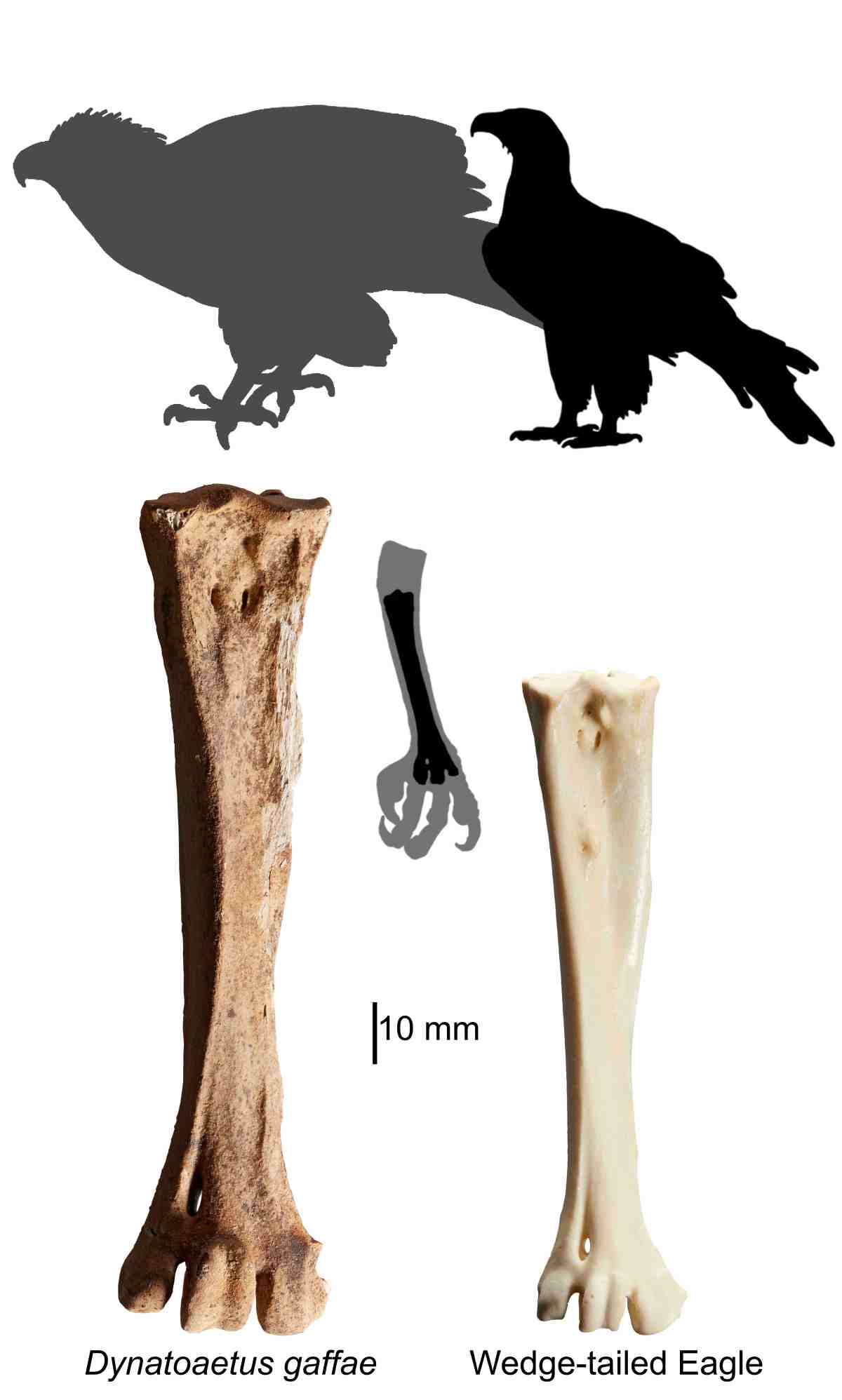Australia’s biggest eagle found in Flinders Ranges
A team of Flinders University fossil hunters has found the remains of a 60,000-year-old eagle that was the largest bird of prey to ever live in Australia.

Lead author Dr Ellen Mather holding the femur of a wedge-tailed eagle (left) and Dynatoaetus gaffae (right) for comparison. Photo Tania Bawden.
Led by paleontologist Dr Ellen Mather, the team was led to the eagle remains by following clues obtained from a South Australian Museum relic card outlining where four large fossil bones had been collected by cavers back in 1956 and 1969.
Repeating instructions indicated by the SA Museum relic, the fossil hunters descended into Mairs Cave in the southern Flinders Ranges and discovered 28 bones scattered about deep among the boulders at the site.
“After half a century, and several delays caused by the pandemic, the expedition with volunteers from the University’s Speleological Society found a further 28 bones scattered about deep among the boulders at the site indicated by one of these museum relics,” Mather said.
“We were very excited to find many more bones from much of the skeleton to create a better picture and description of these magnificent long-lost giant extinct birds.”

Descending the 17m drop that is the entrance to Mairs Cave. Photo Aaron Camens
The discovery allowed Mather to connect the dots to other bones previously found in the Naracoorte Caves, Wellington Caves and near Cooper Creek in the Lake Eyre Basin.
“This discovery reveals that this incredible family of birds was once much more diverse in Australia,” Mather said.
The giant bird has been named Dynatoaetus gaffae (Gaff’s powerful eagle), in honor of Victorian paleontologist Priscilla Gaff, who first described some of these fossils in her 2002 Master of Science thesis.
The eagle had a wingspan of up to three metres and powerful talons wide enough to grab a kangaroo.
“It had giant talons, spreading up to 30cm, which easily would have been able to dispatch a juvenile giant kangaroo, large flightless bird or other species of lost megafauna from that era,” Mather said.
Associate Professor Trevor Worthy, a vertebrate paleontologist at Flinders University, accompanied Dr Mather on her expedition to the Flinders Rangers.
“It was ‘humongous’, larger than any other eagle from other continents, and almost as large as the world’s largest eagles once found on the islands of New Zealand and Cuba,” Worthy said.

Comparison of the tarsometatarsus (footbone) of Dynatoaetus gaffae and a wedge-tailed eagle, with estimated silhouettes of the living animals above. Image Ellen Mather.
At the time, this bird also coexisted with still living species such as the wedge-tailed eagle.
“Given that the Australian birds of prey used to be more diverse, it could mean that the wedge-tailed eagle in the past was more limited in where it lived and what it ate,” Mather said.
The recently discovered Dynatoaetus, which is both eagle and vulture-like, is part of a generation of raptors unique to Australia that existed until around 50,000 years ago.
“This discovery reveals that this incredible family of birds was once much more diverse in Australia, and that raptors were also impacted by the mass extinction that wiped out most of Australia’s megafauna,” Mather said.




